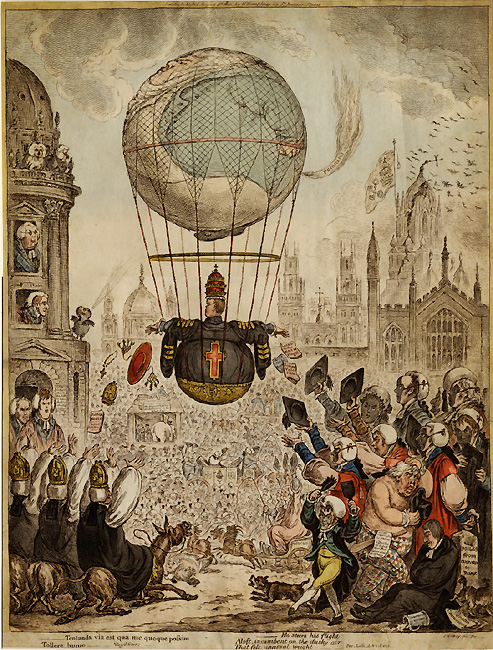Bizarre
- Lepic, Ce qui Restait du Puissant Guillaume de Naillac
- Claeaz, Dancers with Death
- Anonymous American, A Naked Man and Horse
- Klinger, Amor, Tod und Jenseits (Love, Death and the Hereafter)
- Surugue, La Folie pare la Décrépitude
- Legros, La Légende du Bonhomme Misère : La Mort dans le Poirier
- Rops, L’Enlèvement
- Sadeler, Allegory of Opulence, Fornication and Stupidity
- Mohlitz, La Vierge aux Étrons (The Virgin of Turds)
- Legrand, Épaves de Famille (Oddballs of the Family)
- Jacquemart, L’Écurueil (sic)
- Benassit, L’Absinthe!
- de Bry, Punishment of the Mutinous Indians
- Goncourt, Le Singe au Miroir (The Monkey at the Mirror)
- Callot, Les Martyrs du Japon
- Dillon, Les Mendiants (The Beggars)
- Barberis, The Witch
- Budzinski, The Thirsty Giant
- Meryon, Le Ministère de la Marine
- Torre-Bueno, Death’s Arrival
- van Meurs, Animals of America
- Redon, Félinerie
- Chagall, Le Vixe
- Martin, Indécision (Tête de Femme)
- Rops, Le Calvaire
- Rops, Les Frères de la Bonne Trogne
- Gillray, Tentanda via est qua ve quoque possim Tollere humo
- Underwood, Simian Ecstasy
- Veber, Beheaded!
- Strang, Death and the Ploughman’s Wife: Frontispiece
- Corman, The Temptation of Saint Anthony
- Bliss, Gargoyles Spouting
- Castellón, Of Land and Sea
- Eichenberg, Isaiah 11
- Rops, L’Idole (The Idol)
- Master MZ, Aristotle and Phyllis
- Bracquemond, “Hors de mon soleil, canailles!"
- Spare, Nemesis
- Higgens, Forgotten
- Anonymous, Jewish Amulet to Protect Mother and Child
- Daumier, Une Expérience Qui Réussit Trop Bien
- Seligmann, Le Roi du Charbon (King Charcoal)
- Braun, The Release of Force
- Callot, Le Grand Rocher
- Forest, Bâstard Foetus Hérédité, Comte D’Averton Mort-Né
- Jacque, La Souricière
- Veber, “Ah! Qu’il fait chaud"
- Pastelot, Les Sorcières
- Lepic, Le Verger du Roi Louis (The Orchard of King Louis)
- Grandville, Résurrection de la Censure
- Tidemann, The Earth Swallows Up the People of Korah
- Shields, The Descent
- Redon, C’est le diable
- Sadeler, Ita Erit et Aventus Filii Hominis
| 27. James Gillray ( 1757-1815) Tentanda via est qua ve quoque possim Tollere humo |
(click on image to print)

Tentanda via est qua ve quoque possim Tollere humo
Etching with hand coloring, 1810, 510 x 386 mm., British Museum Satires 11570. Fine impression with good period coloring on wove paper with small margins at the sides, trimmed on the platemark top and bottom; the paper lightly toned, tears repaired and creases flattened and some small edge losses in the margins. The overall appearance is quite good. The fantastic image shows William Wyndham, 1st Baron Grenville, wearing a papal crown and riding in a balloon through Oxford, the scene loaded with Catholic symbols, the streets crowded with adherents, scoffers and others quite oblivious to the scene. The occasion was the installation of Lord Grenville as Chancellor of Oxford University. Grenville had been, and continued to be, a proponent of Catholic Emancipation in Britain, something not fully accomplished until 1829, and still, in 1810, a subject of much angry dispute. The Latin title is from Virgil’s Georgics and is translated as “I too must attempt a way by which I may raise myself above the ground.” A quotation from Milton’s Paradise Lost also appears: “He steers his flight aloft, incumbent on the dusky air that felt unusual weight.” The image is rife with references and satiric portraits and an extensive description of it all is available on the website of the British Museum. The print is rare. Only two impressions of it have been at public sale in twenty years (this is apparently one of the two).
![]()